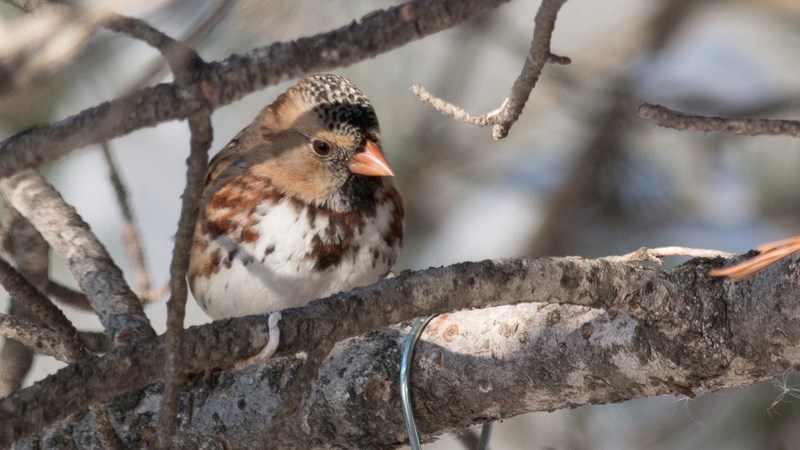Bird experts and enthusiasts recently took part in the 36th annual Snake's Head Christmas Bird Count (CBC) since its inception in 1980.
On Saturday, Jan. 2, 15 participants, mostly from Calgary, intensively surveyed six sub-areas within a roughly 12-kilometre radius circle centred near the Sundre Airport, said Doug Collister, Snake's Head CBC compiler and retired biologist, who lives near Water Valley.
The survey is part of a North America-wide initiative started in 1900, he said.
"Everyone is welcome to participate in the count but groups need to be led by expert birders committed to surveying dawn to dusk. In fact some survey effort occurs before dawn and after dusk in order to better detect owls."
Whenever a small group of volunteers, usually a few people, are out in the field counting birds, the hours the group spends are accounted for and called "party hours." A total of 54 party hours of effort yielded 2,627 birds of 44 species, which was an above-average result at the macro level, he said.
"It's an important data set. It's really the only data set we have of wintering bird populations. So it's pretty valuable."
Among the dozens of bird species counted were a green-winged teal and a spruce grouse, which are unusual species. Also unusual, but not unprecedented, was the sighting of two dark phase/Harlan's phenotype red-tailed hawks and two killdeers, he said.
"Nine pileated woodpeckers was a high count but not a new record, while 12 northern shrikes tied the previous high count. Seven rusty blackbirds were nice to see as they have been hard to find anywhere in the foothills since 2007."
Pine grosbeaks, white-winged crossbills and common redpolls are irruptive winter visitors to the Sheep River CBC area and this was a high ó although not record ó year with counts of 223, 777 and 298 respectively. Ninety-five pine siskins was high but not a record, he said.
Before the annual count started more than 100 years ago, hunters engaged in a traditional holiday hunt. Whoever racked up the most trophies ó feathered and furred ó won, says the National Audubon Society, whose mission it is "to conserve and restore natural ecosystems, focusing on birds, other wildlife, and their habitats for the benefit of humanity and the earth's biological diversity."
Conservation efforts were only beginning to take root during that time, and many observers and scientists were becoming worried about declining bird populations.
"Beginning on Christmas Day 1900, ornithologist Frank M. Chapman, an early officer in the then-nascent Audubon Society, proposed a new holiday tradition ó a ëChristmas Bird Census' that would count birds during the holidays rather than hunt them," says the society's website.
This was the beginning of the Christmas Bird Count, and because of Chapman and the enthusiasm of 27 dedicated birders, 25 counts were held that day in locations ranging from Toronto, Ont., to Pacific Grove, Calif.
Every November, birders who want to get involved in the CBC can sign up through the society's website.
"From December 14 through January 5 each year tens of thousands of volunteers throughout the Americas brave snow, wind, or rain, and take part in the effort," the society says.
"Audubon and other organizations use data collected in this long-running wildlife census to assess the health of bird populations, and to help guide conservation action."
Visit www.audubon.org/conservation/science/christmas-bird-count for more information, including announcements on the date for next year's count, which has not yet been set but will be around the same time.




